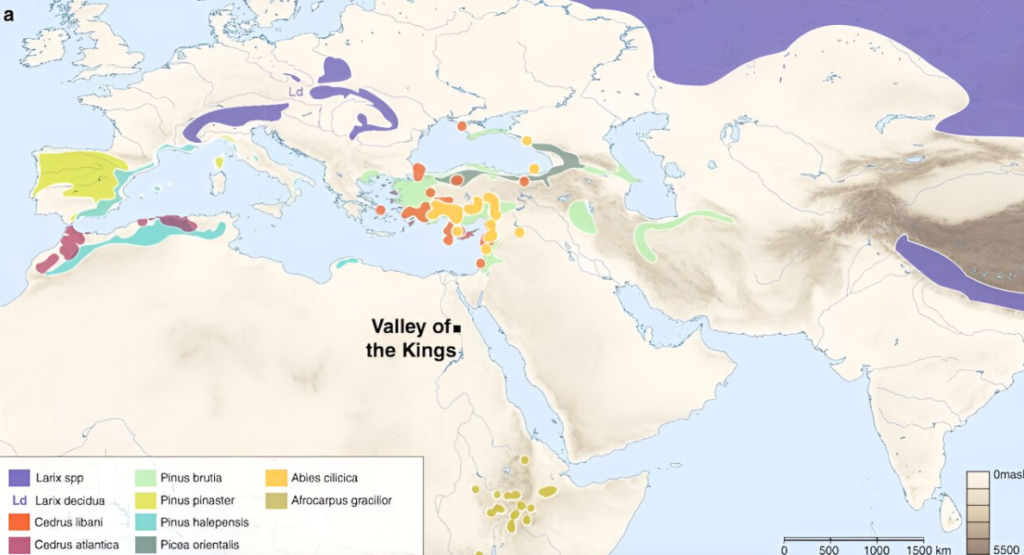Pine, balsam and bitumen! The smell of a mummified Egyptian corpse was chemically recreated.
British archaeologist Howard Carter unlocked another tomb in the Valley of the Kings in 1900, some 22 years before he found Tutankhamun’s tomb. Carter discovered the bones of Senetnay, a mummified Egyptian noblewoman who passed away in 1450 BCE, in tomb KV42.
One of the smells used in Senetnay’s mummification has been recreated by a French perfumer more than a century later. According to information published in Scientific Reports, the ingredients of this ancient Egyptian recipe were analyzed.
The team used the latest technologies in chemical science to reconstruct ancient scents from Senetnay jars found in the tomb. Employed three different chromatographic and mass spectrometric methods, which dissect materials into their constituent compounds. Different molecular combinations exist in certain substances. Based on these characteristic compounds and by comparison with well-known reference materials, several substances were identified.
Two of Senetnay’s jars that were retrieved from the tomb after Carter’s excavation made their way to Germany.
These jars are known as canopic jars. They were used to keep the elite mummified organs of ancient Egypt and are made limestone. Somewhere along the way, but, Senetnay’s jars lost their contents. The mummified organs were completely gone, leaving only minor remnants on the jar bottoms. Remarkably, chemical technology has allowed scientists to take such remains and reconstruct the original.
Investigation revealed the balms used to coat and preserve Senetnay’s organs contained a blend of beeswax, plant oil, fats, bitumen, an unidentified balsamic substance, and resins from trees of the pine family (likely larch).
Another material was Pistacia tree resin or a resin known as dammar, which is found in coniferous and hardwood trees in South East and East Asia.



These were the richest and most complex balms ever discovered for this early time period, which produced interesting results. It was obvious that a great deal of work had gone into creating the balms. This shows that Senetnay, the future pharaoh Amenhotep II’s wet nurse, was a significant figure in her time.
The discoveries also add to mounting chemical evidence that the ancient Egyptians used broad trading networks that reached outside of their own territory to source components for mummification balms. Since there are no native pine trees in Egypt, the potential larch resin had to have come from elsewhere, most likely Central Europe.
The element that was either classified as Pistacia or dammar resin was the most perplexing. If the ingredient was Pistacia, which is made from pistachio tree resin, it most likely originated in a Mediterranean coastal region. But if it were dammar, it would have come from South-East Asia, which is far farther away.
Dammar was found in a later balm from the first millennium BCE, according to recent research of balms from the Saqqara site. It would appear that ancient Egyptians had access to this South-East Asian resin through long-distance trade about a millennium earlier than previously believed, if the presence of dammar resin in Senetnay’s case is confirmed.
Senetnay’s ointment must have scented not only his remains, but also the workshop where it was made and the places where his funeral rites were performed. But due to the volatile nature of fragrances, Senetnay’s unique scents gradually disappeared.
This study involved a collaboration with perfumer Carole Calvez and sensory museologist Sofia Collette Ehrich to bring Senetnay’s lost scent back to life. The results of this endeavor will be on display at the Moesgaard Museum in Denmark in October as part of a new exhibition: “Egypt-Obsessed with Life”
Cover Photo: Senetnay, an ancient mummified Egyptian woman whose internal organs are preserved in a limestone jar.
